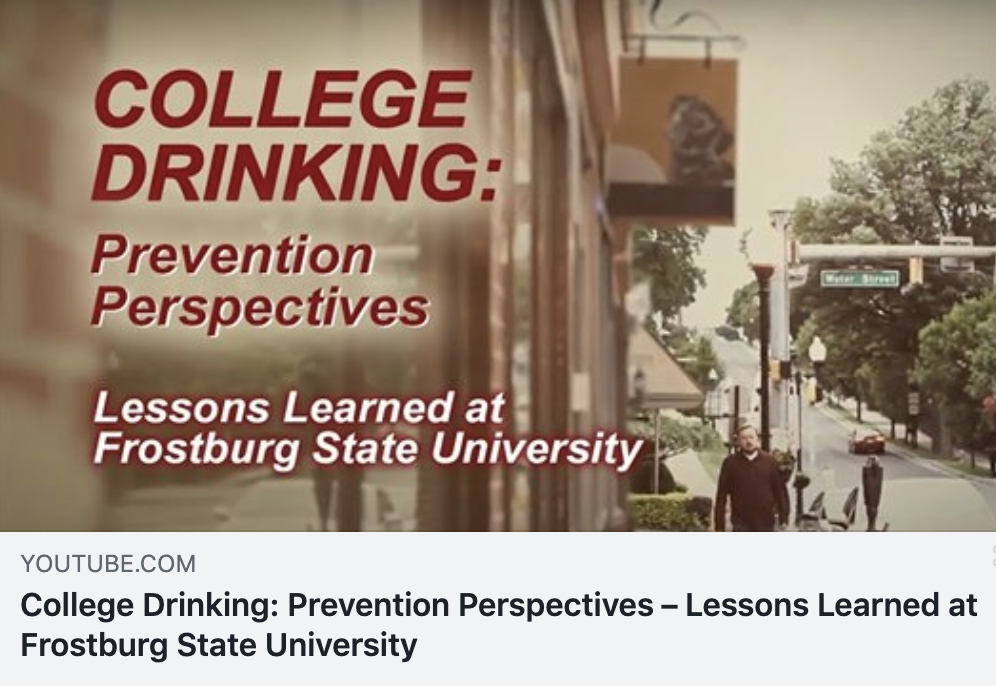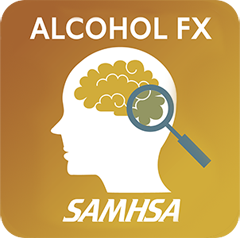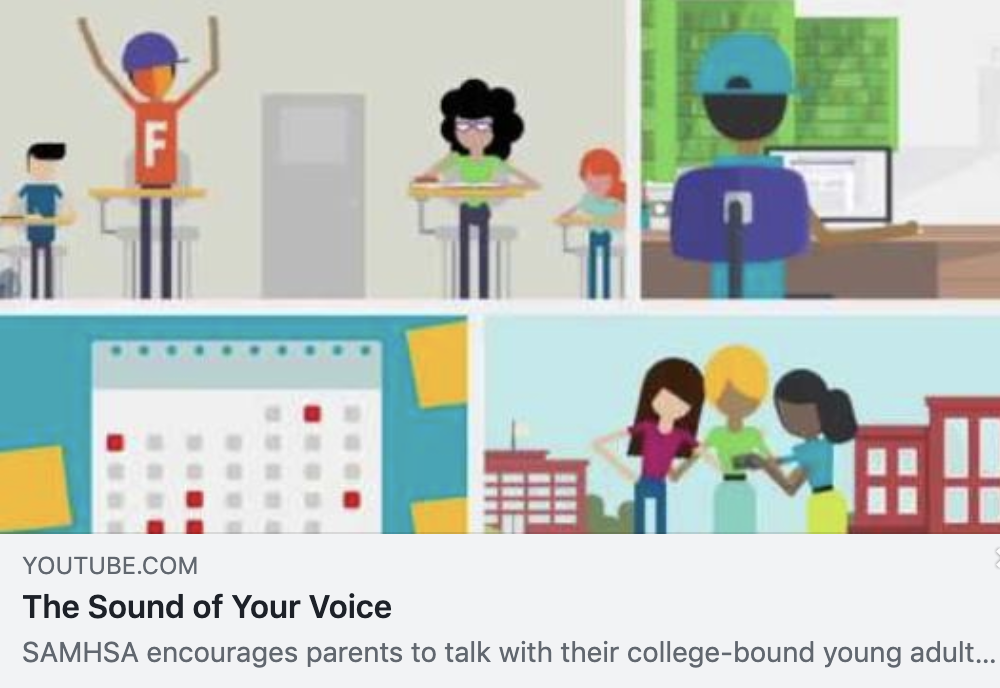Home > Supporting Underage Drinking Prevention From the Ground Up
By Marion C. Pierce
In 2018, 7 million 12- to 20-year-olds reported current alcohol use in the past month, 4 million reported binge drinking, and 861,000 reported heavy alcohol use.[i] For community-based prevention strategists working to prevent underage and high risk drinking, SAMHSA’s Underage Drinking Prevention Education Initiatives (UADPEI) is a program—and a platform—that can help.
For more than a decade, UADPEI has been funded by SAMHSA to increase public awareness and support behavior change activities regarding underage alcohol use, heavy drinking, and binge drinking among youth and young adults. Recognizing that alcohol use by minors can affect communities differently, SAMHSA designed UADPEI so it can respond to the unique challenges that states and communities face. The initiative develops and implements resources and programs that mobilize and educate communities large and small about the dangers of underage drinking and how to collaborate on finding solutions.
Putting a Face on Prevention
SAMHSA’s UADPEI offers several assets that organizations and programs can leverage on a local level, including an extensive product portfolio that marries stories with data to make prevention strategies tangible. The following are a few highlights of these offerings:
 The College Drinking: Prevention Perspectives video series shows how underage drinking prevention strategies are implemented on college campuses. Thus far, SAMHSA has produced two videos that highlight both the alcohol use-related problems and solutions that students, administrators, and community members found together. The first episode is called “Lessons Learned at Frostburg State University,” and it demonstrates the critical role that environmental factors play in underage drinking prevention. The second episode, “Embracing Culture and Context to Prevent Underage Drinking,” features Howard University and Morgan State University and how these institutions have tailored prevention strategies to better respond to their unique needs and histories and those of their students.
The College Drinking: Prevention Perspectives video series shows how underage drinking prevention strategies are implemented on college campuses. Thus far, SAMHSA has produced two videos that highlight both the alcohol use-related problems and solutions that students, administrators, and community members found together. The first episode is called “Lessons Learned at Frostburg State University,” and it demonstrates the critical role that environmental factors play in underage drinking prevention. The second episode, “Embracing Culture and Context to Prevent Underage Drinking,” features Howard University and Morgan State University and how these institutions have tailored prevention strategies to better respond to their unique needs and histories and those of their students.
 To bring the very real effects of alcohol on the developing brain to life, SAMHSA developed Alcohol’s Effects on the Brain (AlcoholFX), a free, science-based app that provides teachers with interactive lessons for students ages 10 to 12 to show them how and why to avoid underage alcohol use. The app combines real-world scenarios with science and includes lesson plans designed to keeps users engaged with the app. Anyone who works in prevention can download this app through the SAMHSA Store, on the App Store, or via Google Play, then share it with youth who may be unaware of how alcohol affects the brain.
To bring the very real effects of alcohol on the developing brain to life, SAMHSA developed Alcohol’s Effects on the Brain (AlcoholFX), a free, science-based app that provides teachers with interactive lessons for students ages 10 to 12 to show them how and why to avoid underage alcohol use. The app combines real-world scenarios with science and includes lesson plans designed to keeps users engaged with the app. Anyone who works in prevention can download this app through the SAMHSA Store, on the App Store, or via Google Play, then share it with youth who may be unaware of how alcohol affects the brain.
 Underage drinking prevention made the marquee in Times Square thanks to a SAMHSA video public service announcement (PSA), The Sound of Your Voice. This PSA shows the consequences of underage drinking that young adults transitioning to college often experience—from poor academic performance to susceptibility to violence and injury, including sexual assault, to involvement in the justice system. The PSA also spotlights the vital role that parents can play in determining whether a young person decides to drink while underage.
Underage drinking prevention made the marquee in Times Square thanks to a SAMHSA video public service announcement (PSA), The Sound of Your Voice. This PSA shows the consequences of underage drinking that young adults transitioning to college often experience—from poor academic performance to susceptibility to violence and injury, including sexual assault, to involvement in the justice system. The PSA also spotlights the vital role that parents can play in determining whether a young person decides to drink while underage.
SAMHSA’s UADPEI also produces fact sheets and data visualizations using the latest research from the National Survey on Drug Use and Health about underage drinking. The team develops brochures for transition-age youth, shareable social media graphics, materials in Spanish, toolkits for prevention strategists, promotional materials for special events, and discussion guides.
A key component of UADPEI is the Communities Talk initiative. Through Communities Talk, SAMHSA provides seed money to help communities organize events and start critical conversations about underage drinking. These hyper-local conversations get at the root of what an area is facing and the best ways to address their challenges; for instance, in some communities, the generational social acceptance of underage drinking is a real problem, while unrestricted access to alcohol is a barrier to prevention in other areas.
Since UADPEI began in 2006, SAMHSA has provided 11,000 stipends to communities in all 50 states and eight U.S. territories.
Expanding the Message
As with any federal program, collaborating with like-minded organizations and entities is essential to generating positive outcomes in underage drinking prevention. In the more than 10 years that UADPEI has been in existence, strategic collaborations have moved the work forward in important ways. For example, SAMHSA co-presents with other substance misuse prevention leaders at national conferences, including those hosted by the Centers for Disease Control and Prevention, NASPA—Student Affairs Administrators in Higher Education, and the Community Anti-Drug Coalitions of America. Through these presentations, SAMHSA elevates research, draws attention to important trends in underage drinking prevalence, and forges new collaborations that support ongoing prevention work in communities.
SAMHSA’s UADPEI is continuously looking forward and adapting. The initiative analyzes trends in underage alcohol use to determine shifts in prevalence over time. SAMHSA conducts audience research regularly to respond to the needs of strategists on the frontlines of underage drinking prevention, while constantly updating and refreshing materials.
If you would like to learn more about the resources mentioned in this article and the many ways SAMHSA’s UADPEI is driving underage drinking prevention both nationally and locally, visit the website at www.stopalcoholabuse.gov.
For questions about UADPEI generally or information on how to organize a Communities Talk event, contact Marion C. Pierce at [email protected].
[i] Substance Abuse and Mental Health Services Administration. (2019). Results from the 2018 National Survey on Drug Use and Health: Detailed Tables (Table 2.32A). Retrieved from https://www.samhsa.gov/data/sites/pttc/files/cbhsq-reports/NSDUHDetailedTabs2018R2/NSDUHDetTabsSect2pe2018.htm